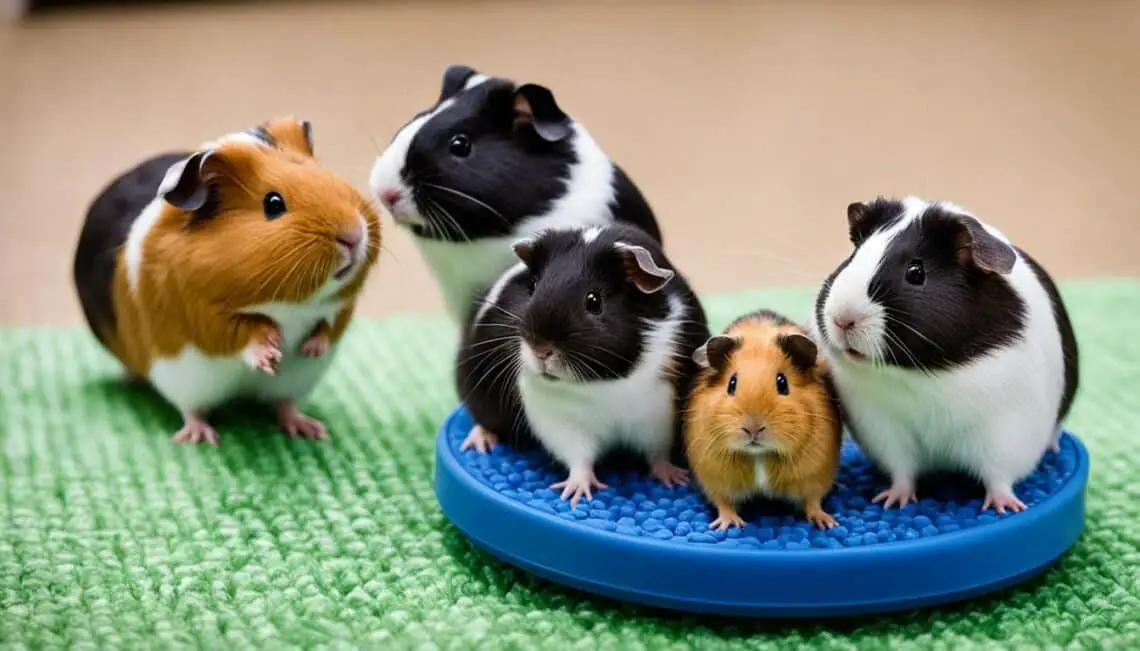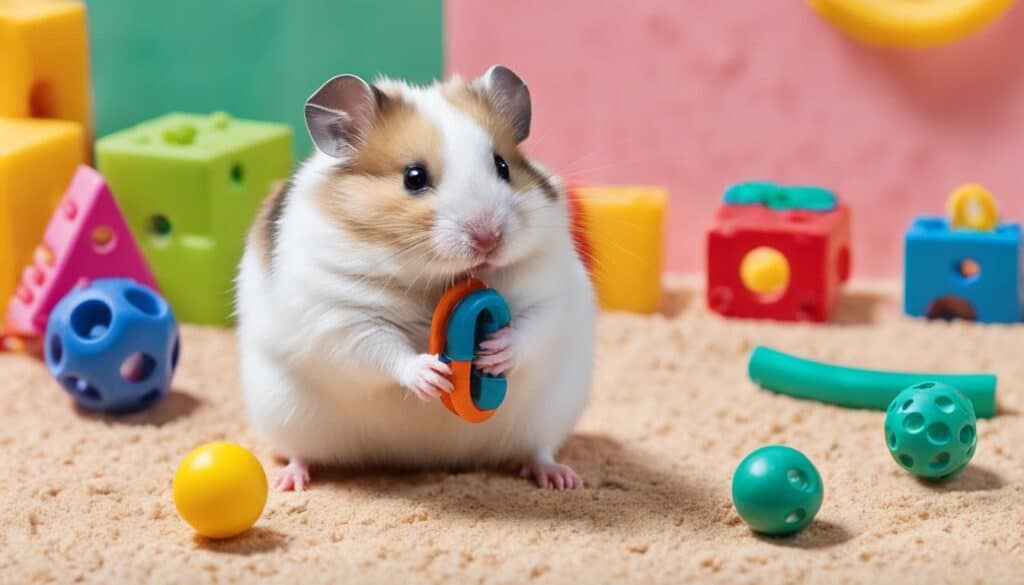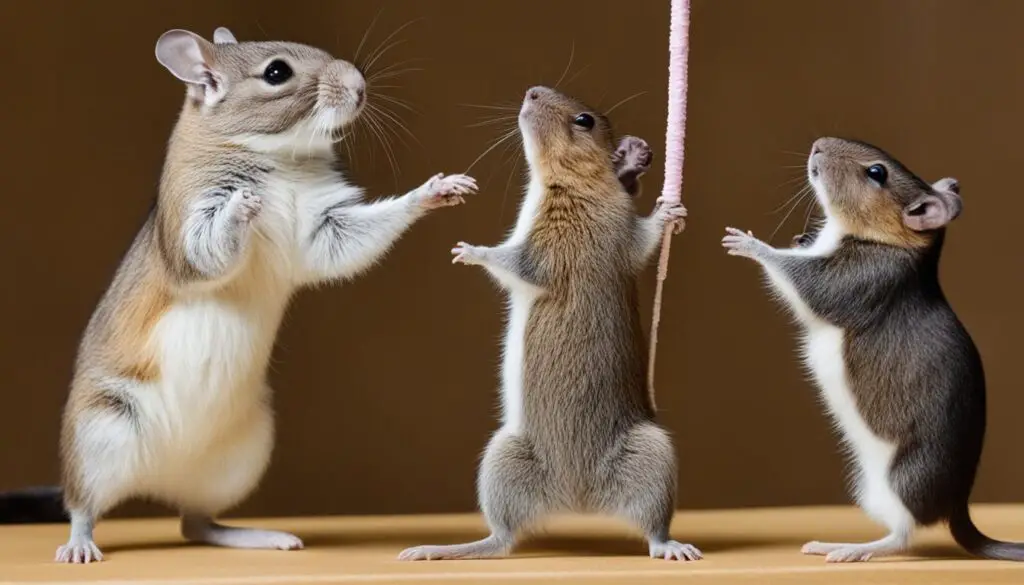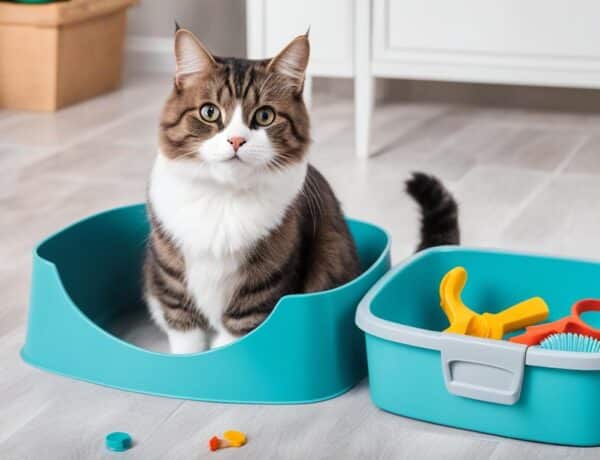As a pet owner, I am always on the lookout for effective training techniques that are gentle and ethical. That’s why I turned to clicker training for my small mammals, and I haven’t looked back since. Clicker training has proven to be a fun and rewarding method for shaping behaviors in small mammals like birds, rabbits, rats, and more.
Clicker training is based on the principles of operant conditioning, an approach that emphasizes positive reinforcement and avoids punishment. By using a clicker as a conditioned reinforcer, I have been able to communicate with my pets effectively and encourage them to repeat desired behaviors.
Key Takeaways:
- Clicker training is a gentle and ethical approach to training small mammals.
- It is based on positive reinforcement and avoids the use of punishment.
- The clicker serves as a conditioned reinforcer, marking desired behaviors.
- Short, enjoyable training sessions are key to success.
- Clicker training can be used to teach various behaviors to small mammals.
What is Clicker Training and How Does it Work?
Clicker training is a highly effective method based on the principles of operant conditioning. It involves using a clicker to mark and reinforce positive behaviors in small mammals like birds, rabbits, rats, and more. This gentle and ethical approach to training relies on rewards and a conditioned reinforcer to shape desired behaviors without the use of punishment.
Operant conditioning is a learning process in which behaviors are strengthened or weakened based on the consequences that follow them. Clicker training utilizes this concept by associating the sound of a clicker with a reward, such as a tasty treat. The click acts as a conditioned reinforcer, signaling to the small mammal that it has done something right.
By consistently pairing the click with a reward, the animal learns to associate the click with a positive outcome. This encourages them to repeat the behavior to receive the reward. The clicker serves as a precise marker for the exact moment the desired behavior is performed, making it easier for the small mammal to understand what they are being rewarded for.
Compared to punishment-based training methods, clicker training is gentler and more effective. It focuses on positive reinforcement, motivating the small mammal to actively participate in the learning process. This creates a positive and enjoyable training experience for both the pet and the owner.
Clicker training is a powerful tool that unlocks the potential for clear communication, learning, and behavior shaping in small mammals. By utilizing the principles of operant conditioning and the use of rewards, this method empowers pet owners to effectively train their furry friends and build a strong bond based on trust and positive experiences.
How to Clicker Train Your Small Mammal
Clicker training is a highly effective method for teaching and shaping behaviors in small mammals. To start clicker training, it is crucial to choose the right clicker that produces a sound that does not startle or frighten your pet. The clicker should be distinct and consistent, allowing for clear communication during training sessions.
Once you have selected a suitable clicker, the next step is to “charge” it by associating the sound with a reward. This process helps your small mammal understand that the clicker signifies a positive outcome. To charge the clicker, follow these steps:
- Ensure you have plenty of treats readily available.
- Find a quiet and comfortable training space where your small mammal can focus.
- Click the clicker once and immediately offer your pet a treat. Repeat this process multiple times, clicking and treating in quick succession.
- Continue the click-and-treat sequence until your small mammal starts expecting a treat every time they hear the click.
Once the clicker is charged, you can begin using it to reward desired behaviors. Whenever your pet exhibits a behavior you want to reinforce, such as sitting, jumping, or coming when called, click the clicker and offer a treat immediately. This reinforces the connection between the behavior and the positive outcome, making your small mammal more likely to repeat the action in the future.
Shaping behaviors is an essential aspect of clicker training. Instead of expecting your small mammal to perform the desired behavior perfectly from the start, you can break it down into smaller steps and reinforce each step along the way. For example, if you want to teach your rabbit to jump through a hoop, you can start by rewarding them for approaching the hoop, then for sniffing it, and gradually work up to jumping through it.
Remember to keep your training sessions short, usually around 5-10 minutes, as small mammals have shorter attention spans. Make the sessions enjoyable by incorporating play and praise. Be patient and consistent, and your small mammal will learn and thrive through clicker training.
Other Behaviors to Teach Your Small Mammal
Once your small mammal has mastered a behavior through clicker training, you can expand their repertoire by teaching them additional behaviors. Here are some examples of behaviors you can shape and reinforce using clicker training:
- Teaching your small mammal to hold up a paw
- Training them to sit up on their hind legs
- Guiding them to turn in a circle
- Teaching them to step up onto different surfaces
When introducing new behaviors, it’s essential to continue using the clicker to mark the desired behavior and then offer a treat as a reward. By consistently pairing the click with a treat, your small mammal will learn to associate the clicker sound with positive outcomes. This reinforcement strengthens their understanding of the behavior and motivates them to improve their skills.
Remember, shaping behavior is a gradual process. It involves breaking down the desired behavior into smaller steps and rewarding each step along the way. By incrementally reinforcing the small mammal’s progress, you can guide them towards performing more complex behaviors.
Clicker training offers endless possibilities for teaching your small mammal new and exciting behaviors. Get creative and explore the unique abilities of your furry friend! With patience and consistency, you’ll be amazed at how quickly they can learn and perform a wide range of behaviors.
Continue your clicker training journey with the techniques and tips discussed above, and watch as your small mammal blossoms into a well-trained and responsive pet!
Conclusion
Clicker training is a highly effective and ethical method for training small mammals. It offers a gentle and positive approach to shaping desired behaviors without resorting to punishment or fear-based techniques. By using a clicker to mark the behavior and offering a treat as a reward, you can establish clear communication with your small mammal and enhance their learning experience.
Not only does clicker training provide mental stimulation for your pet, but it also strengthens the bond between you and your furry friend. Through consistent training sessions, you can unlock the potential of clicker training and witness remarkable results in your small mammal’s behavior and overall well-being.
Whether you have a bird, a rabbit, a rat, or any other small mammal, clicker training can be applied to a variety of species. By following the step-by-step techniques outlined in this article, you can effectively shape behaviors, provide mental enrichment, and facilitate the learning process for your pet.
If you want to enhance your bond with your small mammal and tap into their full potential, give clicker training a try. With patience, consistency, and positive reinforcement, you can achieve incredible results and enjoy a harmonious relationship with your furry companion.
FAQ
What is clicker training?
Clicker training is a method of training small mammals that involves using a clicker to mark and reward desired behaviors. It is based on the principles of operant conditioning and focuses on positive reinforcement rather than punishment.
What small mammals can be trained with clicker training?
Clicker training can be used to train a variety of small mammals, including birds, rabbits, rats, and more.
How does clicker training work?
Clicker training works by associating the sound of a clicker with a reward. The clicker serves as a conditioned reinforcer, signaling to the small mammal that it has performed a desired behavior. By rewarding the behavior that is marked with a click, the animal learns to repeat it.
How do I start clicker training?
To start clicker training, you need to choose a clicker that does not startle or frighten your small mammal. Then, you must “charge” the clicker by clicking it and immediately giving your pet a treat. This helps them associate the click with a reward. Once the clicker is charged, you can use it to mark and reward desired behaviors.
What are some other behaviors I can teach my small mammal with clicker training?
With clicker training, you can teach your small mammal a variety of behaviors, such as holding up a paw, sitting up on their hind legs, turning in a circle, or stepping up onto different surfaces. The key is to consistently use the clicker to mark the desired behavior and then offer a treat as a reward.







No Comments